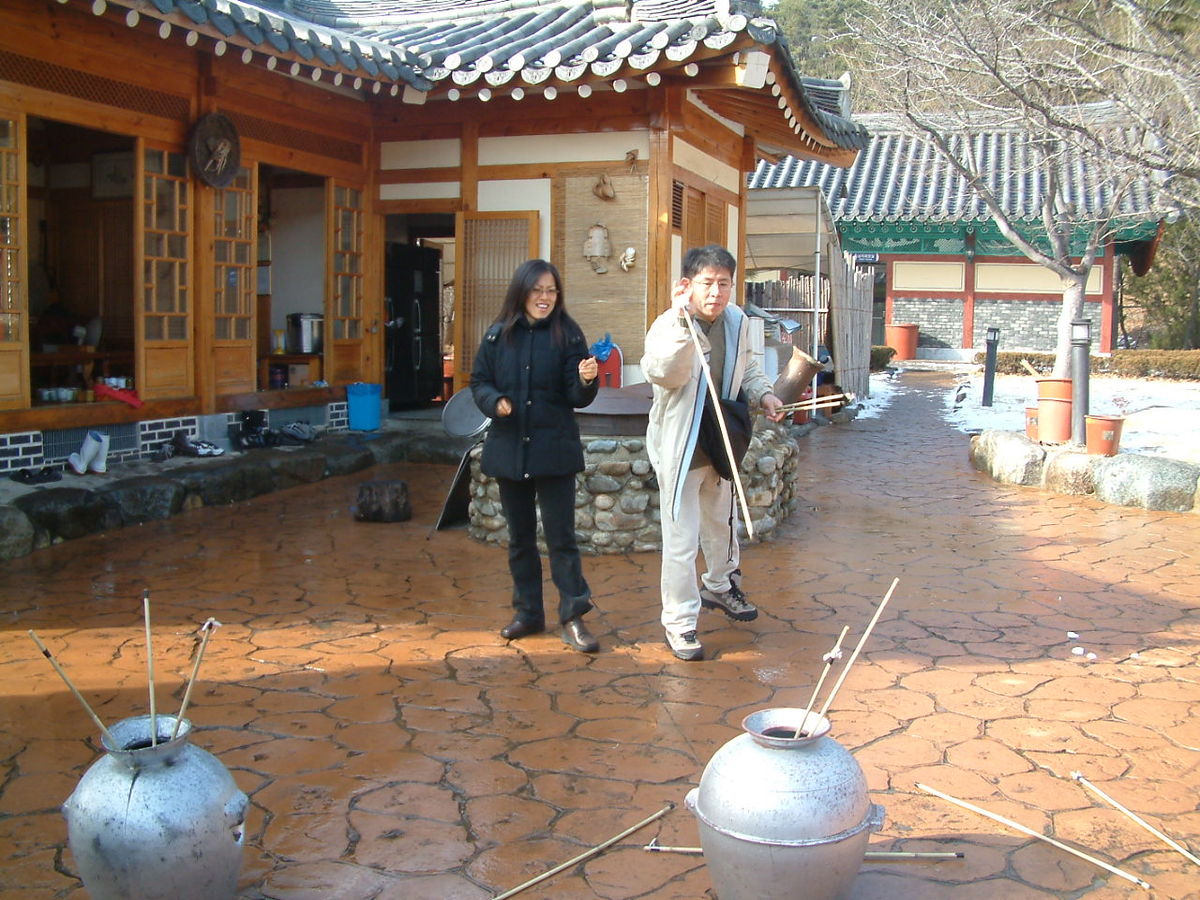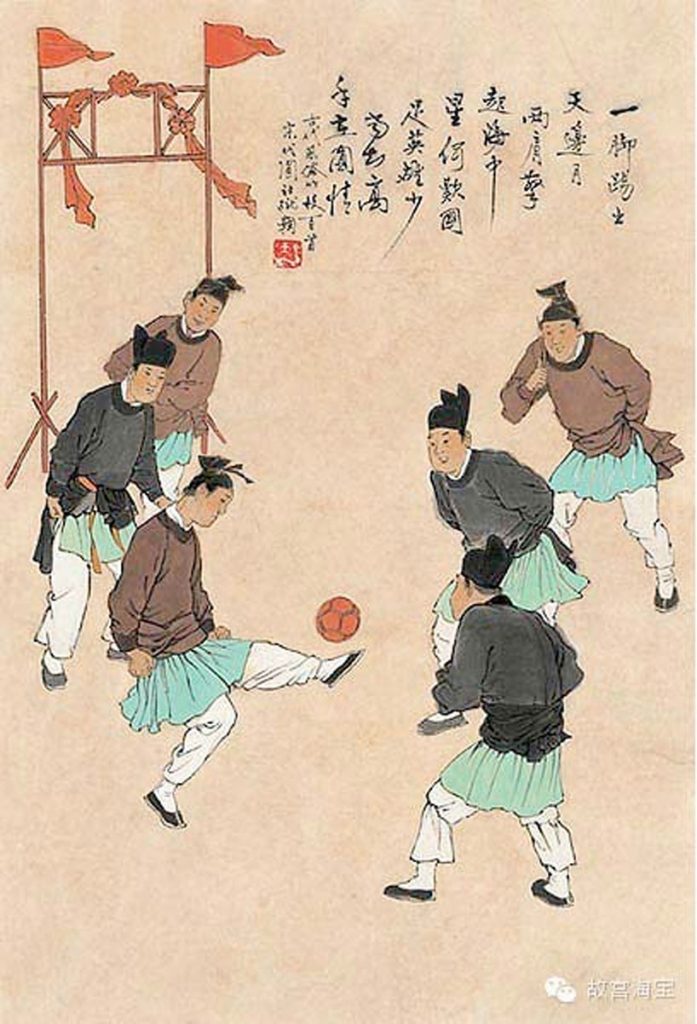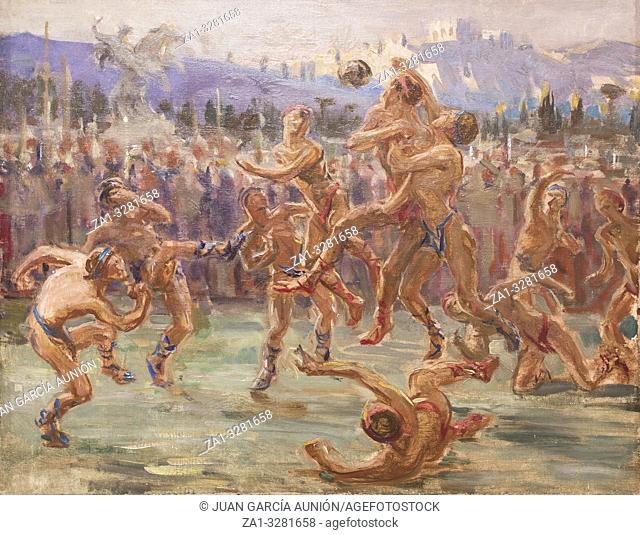Sports
The Dynasty enjoys a wide variety of sports and athletics. The Dynasty considers “sports,” as a broad category, to encompass anything which involves physical activity as well as winning or losing. Thus, swimming alone is not a sport, while race-swimming is.
These are some examples of sports and athletic pursuits enjoyed on the Isle.
Athletic Sports
Athletic sports involve little equipment, and focus mainly on the strength or skill of the competitor. Many of these sports involve one-on-one competition for achievement, and don’t necessarily score for points like ball games.
Wrestling
Wrestling is one of the oldest sports in Creation, and practiced in some form by nearly every culture; the Dynasty is no exception. Wrestling is as simple as they come: grapple with the opponent, and overcome them using your strength. The first to tap out is the loser. Some competitions add more rules, some even less – allowing for strikes and tricks – but whatever the rules may be, wrestling is wrestling.
Wrestling is probably the most widely-spread sport in the Realm, competing with boxing and racing as the most common athletic pursuits.
Boxing and Brawling
Boxing is the sport of facing off against an opponent and punching one another until one of you falls down. Boxing is one of the ancient Shogunate’s Five Military Arts, along with archery, javelin-throwing, dueling, and riding. Boxing is popular among all levels of society since it requires nothing more than two fists, and allows for excellent betting rings. The Dynasty usually uses cushioned gloves and forbids strikes to the face and groin, in order to keep boxing civilized, unlike peasants who simply brawl.
Archery
Archery is an ancient tradition of the Isle’s military cultures. Archery competitions might involve shooting accurately the farthest, or shooting the most accurate shots within a short window of time, or any other test of skill with the bow and arrow. Wàn culture also practices competitive archery with precision crossbow shooting, and many of the Realm’s cultures compete in mounted archery, trying to shoot accurately while atop a speeding mount.
Throwing Things and Tuho

There are many, many sports based around throwing things accurately and throwing them far. A few such arts include discus or chakram throwing (popular in Lord’s Crossing), javelin throwing (an Arjufi favorite), throwing axes (a distinctly Cathak passtime, descending from Daoshin axe-love), throwing quoits (a favorite in the ministries because it does not disrupt one’s wardrobe), and throwing darts. Generally, throwing sports involve accuracy or distance, sometimes both.
As long as there is something to throw, people will make a sport of it, so throwing sports are very common among the peasantry as well as among the Dynasty.
Tuho is a throwing game involving large darts which competitors attempt to throw into the mouth of a large pot from a distance. Tuho is especially popular for festivals and holidays.
Skating
Skating is common in the mountainous regions and on the northern shore, where ice forms in the winter. Skating competitions usually involve challenges with form and grace, the focus being on body control and precision. Skating is also popular as a form of racing.
Racing Sports
Racing sports are a great way to show off one’s skill in a very direct competition. Being faster and nimbler than the opponent are almost always admirable qualities.
Athletic Racing
Footraces simply involve getting from a starting line to a finish line before any of one’s competitors. Sprinting, long-distance races, and modifications like hurdles and long jump are found throughout the Isle.
Races might also involve swimming or relays, or swimming relays.
Animal Racing
Animal racing or jockeying involves riders atop animals racing to the finish. Animal races can be short events that take place in a single session, or long rallies like the Eagle’s Landing Invitational which features a many-day competition from Eagle’s Landing to the finish line in Eye-of-Creation.
Common animals for racing include, naturally, horses, which can be found throughout the Isle. In the northestern Isle, chocobo are a common racing animal. In the south, riding lizards are ponderous, but can climb cliff-faces, allowing for startling vertical ascents. Historically, the Tarpan Expanse was home to centipede-riders, but the decay of Tarpan into the Wastes has lead the riding centipedes to near extinction. Some Dragon-Blooded Dynasts take advantage of their prowess to tame mighty sea beasts and race those, especially in and around the Gulf of Daana’d.
Chariot Racing
Chariot racing comes primarily in the form of arena racing, where competitors ride around a huge arena a certain number of times. Chariots almost always use horses or chocobos, depending on the climate. Chariot races often draw huge, devoted fans, who cheer on teams identified by a color, an animal, or some other kind of identifier. The city of Juche was once famously caught up in a massive riot after the “unjust” loss of the Blues to the Eagles, and the subsequent public controversy of bribes and cheating.
The Dynasty takes chariot racing to a whole other level with the Imperial Rally, Creation’s largest and most prestigious race. Beginning and ending in the Imperial City, the Rally is a huge chariot race along the entire length of the Great Coast Road. Dynasts compete in specially-made jade chariots, pulled by bound elementals, which race as fast as brushfire and as nimbly as swirling ice.
Boat Racing
Boat racing is usually in the form of rowing competitions, where crews face off against one another to complete a certain distance. Another popular form of boat racing is sailing, where small sailing vessels compete for time on a fixed course. Boat races are usually called regattas, and feature as a refined high-class sport enjoyed mostly by the Dynasty.
Winter Racing
During winter months when ice is on the ground, special races become available for those who are interested. Speed skating involves competing on ice skates. Skiing races are common in the mountains, and especially favored by Tepet and Nellens. Dog-sled races are a regional specialty of Endless Prefecture. Ice climbing races are a dangerous passion of a dedicated few.
Ball Sports
Ball sports can be found throughout the Isle, but the most elaborate originate from Radimel’s Seat and the port of Arjuf. Radimel’s Seat, as one of the only places on the Isle that rubber trees grow consistently, is able to produce rubber balls that are bouncy and flexible. Arjuf, through a rich ancient trade with Radimel’s Sea, has incorporated many of these rubber-ball games into their own traditions. Elsewhere on the Isle, bouncy balls can be constructed by inflating an animal bladder with compressed air and wrapping it in leather, and heavy leather balls can be found anywhere that leather is produced.
Rubber balls remain mostly a toy of the Dynasty, but leather balls are enjoyed by all classes.
Ts’u-chü

Ts’u-chü is a competitive team-based ball game pitting two teams of equal size against one another, ranging from 6 to 12 players per side. A light, bouncy air-filled ball makes the game very quick. Each side has a large, painted post at their end of the field. The goal is to kick the ball so that it hits the opposing team’s post. Players may only use their feet.
Ts’u-chü is played by all levels of society. Large cities are filled with ts’u-chü courts, from dirt courts in peasant alleyways to lovely grassy courts in the gardens of Dynastic estates.
Kemari
Kemari is a cooperative game for any number of players, using a ts’u-chü ball. Instead of teams competing to kick the ball into opposing goals, the kemari players collaborate to try to keep the ball in the air for as long as possible. The players may use any part of the body except for their hands or arms.
Harpastum

Harpastum is a cooperative game using a dense rubber ball a little smaller than a head. The ball is colored brightly so that it is easy to see. Harpastum is played by huge teams, sometimes up to as many as thirty players a side. The goal is simple: each team has a line at their side of the field, and you want to get the ball over your opponent’s line. Harpastum has few rules besides; the ball must remain visible at all times, and the ball cannot be thrown out past the sidelines or into the crowd. Fighting is entirely permitted, using punches, kicks, or any other means; many matches of harpastum end with bloodied faces and broken noses.
Although female harpastum leagues certainly exist, harpastum is an archetypally male sport. Many regard it as the defining male act: brutal, emotional, showy, and loud. Male harpastum players are highly desired; most leagues play in only a loincloth, and attract many female admirers. The Empress herself was said to occasionally take lovers from the most successful, well-muscled harpastum players.
A variant of harpastum called episkyros is played throughout the northwestern Isle. The goal in episkyros is not to carry the ball over the opposing team’s line, but instead to throw it over their heads over their line. Episkyros is generally thought to be an ancestor of harpastum, and generally features more throwing and less wrestling.
Handball
Handball is a competitive team sport played with a small, dense ball. Each team has a goal at their end of the field. They must throw the ball into the opposing team’s goal, but can only move one step while holding the ball, and must throw the ball within a few seconds of catching it. In handball, the ball remains in constant motion, the teams maneuvering around one another to try and open an opportunity to throw to the goal.
Follis
Follis is a competitive team sport played with an inflated leather ball. The players on each team face off against one another with a barrier between them, usually a low wall or a net. The goal is to get the ball to land on the opponent’s side of the field. Players may only hit the ball with their forearms or shins; because the ball is so dense, players usually wear protective bracers. Each side may only bounce the ball among themselves twice before they must pass it over to the other side.
Laxoa
Laxoa (lah-show-ah) is a bat-and-ball game which is mostly played in Radimel’s Seat, where rubber to make the balls is available. Peleps herself was fond of the game as a passtime, having learned it during the time in which her House was based on Radimel’s Seat. Because of Peleps’ fondness for the game, it has a small but widespread following.
Laxoa involves two teams, played either solo or in pairs. All players face a common wall, and hit an extremely bouncy rubber ball using long, narrow rectangular paddles. After hitting the ball off the wall, it must fly far enough to cross the foul line, and then bounce once; after it bounces once, it is valid and the opposing team must try to hit it back. A team scores a point if the opposing team fails to hit the ball before it bounces a second time, or if the opposing team hits the ball such that it doesn’t clear the foul line. The ball can reach extremely high speeds, especially when hit by a Prince of the Earth with fury in her heart; be careful.
Other Sports
Some of the Dynasty’s hobbies don’t fit nicely into racing, athleticism, or ball games, the three broad categories described above. They go here.
Hunting
Most Dynasts consider hunting a form of sport, based around tracking down a specific beast. Elk, wild boar, and various kinds of birds are very common prey for both mortal and Exalted hunters. More exotic creatures, like hellboar, tyrant lizard, and twisted Wyld things from hidden pockets, are the domain of Exalted hunters seeking a unique and satisfying hunt.
Kite Fighting
Kite fighting involves flying kites with abraisive strings, using subtle motions to direct the kites to try and cut the strings of competitors. Kite fighting is a relaxing passtime for the Dynasty and often enjoyed on retreats.
Climbing
Climbing is a challening activity which often requires special equipment. Many of the Chosen are able to use their powers to enhance their climbing. Often, climbing is non-competitive, simply a challenge to see which mountains can be bested and which walls can be climbed. Some well-traversed paths lend themselves to race-climbing, where two or more climbers try to reach the top lip first. In some wintery places, ice-climbing on glaciers allows for a unique challenge.